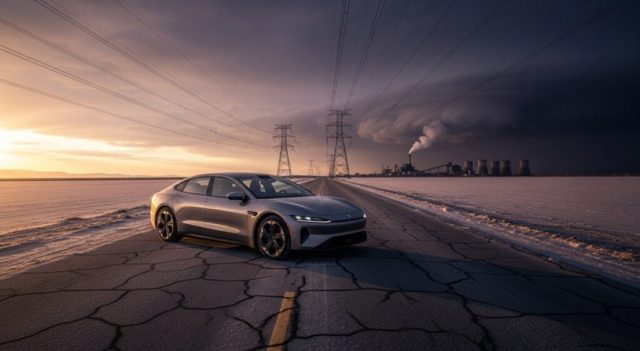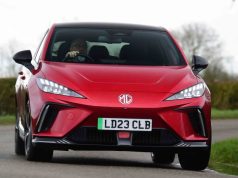A Full Lifecycle Look at EV Elements
This article may contain affiliate links.
For the eco-conscious driver, switching to an electric vehicle (EV) often poses a dilemma: are the environmental benefits real, or are they offset by battery manufacturing and dirty electricity?
Get a clear, pragmatic look at the entire lifecycle of an EV versus a traditional internal combustion engine (ICE) vehicle, examining everything from manufacturing to disposal, to answer the critical question: Are electric cars better for the environment?
The Upfront Challenge: EV Battery Manufacturing
The substantial upfront environmental cost of battery production begins with mining essential raw materials like lithium, cobalt and nickel. The industry is rapidly evolving while these activities carry ecological tolls, such as water consumption and soil erosion. High levels of investment in mining and refining have allowed the global supply of critical minerals to meet current demand. Critically, the largest share of carbon emissions in battery production stems from the electricity used in manufacturing, not extraction. Consequently, using cleaner electricity in factories significantly reduces these attributable emissions.
The long-term sustainability of EVs hinges on creating a circular economy for batteries to reuse and recycle materials. Recycling companies are making significant progress, developing advanced processes that recover, on average, more than 95% of valuable materials from old batteries, including nickel, cobalt, copper, aluminum, lithium and graphite. This reduces the need for new mining and minimizes waste.
In Europe, the updated End-of-Life Vehicle (ELV) Regulation, an example of Extended Producer Responsibility (EPR), mandates manufacturers’ accountability for the vehicle’s lifecycle. These rules mandate recycled content, aiming by 2035 to ensure new vehicles use a minimum share of recycled plastics and that 350 tons of rare earth materials are collected for recycling. These policies accelerate the transition to a sustainable, closed-loop system.
Image generated by Gemini
The Power Source: Where Your EV’s Electricity Comes From
The environmental benefit of an EV depends on the cleanliness of the electrical grid used for charging. The critique that EVs merely shift emissions from tailpipe to power plant overlooks two facts: grids are getting cleaner, and the driver controls the source. If an EV charges on a grid relying heavily on fossil fuels, its well-to-wheel emissions are higher. The IEA’s 2024 study confirms that EV emissions vary based on the regional energy mix.
However, U.S. power grids are rapidly decarbonizing. Texas, for instance, saw solar output average nearly 25% of the total power needs on the ERCOT grid during midday hours in the summer of 2024. Federal data confirms Texas’s lead in renewable energy in 2024, adding more solar and battery storage than any other state. The ongoing decline of coal-fired power plants in favor of renewables signifies a fundamental shift.
Drivers have the most influence when choosing their electricity provider. An EV owner can ensure their vehicle is powered by immaculate energy to maximize environmental benefits. Many utilities offer renewable energy plans that source electricity from 100% renewable, eco-friendly sources like wind and solar. This choice ensures every mile driven is emission-free, accelerating the transition to a better, more sustainable energy future and making the EV’s well-to-wheel footprint as clean as possible.
Comparing Lifecycles: ‘Well-to-Wheel’ Emissions
A complete life cycle assessment (LCA) is essential to accurately compare environmental impact, accounting for all emissions from raw material extraction to end-of-life recycling. While EV manufacturing creates more upfront emissions, zero tailpipe emissions rapidly offset this carbon debt. A comprehensive 2023 study by the International Council on Clean Transportation (ICCT) found that a new battery electric car in Europe produces 73% less life-cycle greenhouse gas emissions than its gasoline counterpart. EVs offset the initial emissions debt after only about 17,000 kilometers (approximately 10,500 miles) of driving. The ICCT study showed BEVs are also significantly cleaner than hybrids, reinforcing that only pure electric vehicles can deliver the necessary emission cuts. The European organization Green NCAP also provides LCA methodology that rates cars on their full environmental footprint, confirming that even when charged on a fossil-fuel-inclusive grid, EVs still produce lower overall emissions than gas cars over their lifespan.
The full-life environmental impact differences are stark. At the same time, an EV has higher manufacturing emissions due to the battery, but its operational life results in zero tailpipe emissions and a rapidly clean electric fuel source. Conversely, an ICE vehicle has lower manufacturing emissions but generates high pollutants and greenhouse gases throughout its operational life from gasoline combustion. Additionally, gasoline production, from drilling and refining to transportation, adds substantially to the ICE vehicle’s overall footprint. The EV’s simpler mechanical design results in fewer moving parts and higher long-term reliability with lower maintenance, contrasting with the ICE vehicle’s proneness to expensive, age-related repairs.
Driving Forward: Making the Cleanest Choice
The data show that electric cars are a significantly better choice for the environment over their lifetime than gas cars. The primary concerns—battery manufacturing and grid electricity—are being effectively addressed through recycling innovations and the rapid growth of renewable energy.
Ultimately, by understanding the whole picture, consumers can drive with confidence, knowing their EV choice, paired with decisions like selecting a clean energy provider, is making a tangible difference for a more sustainable future.
The post Are Electric Cars Better for the Environment? first appeared on Clean Fleet Report.







